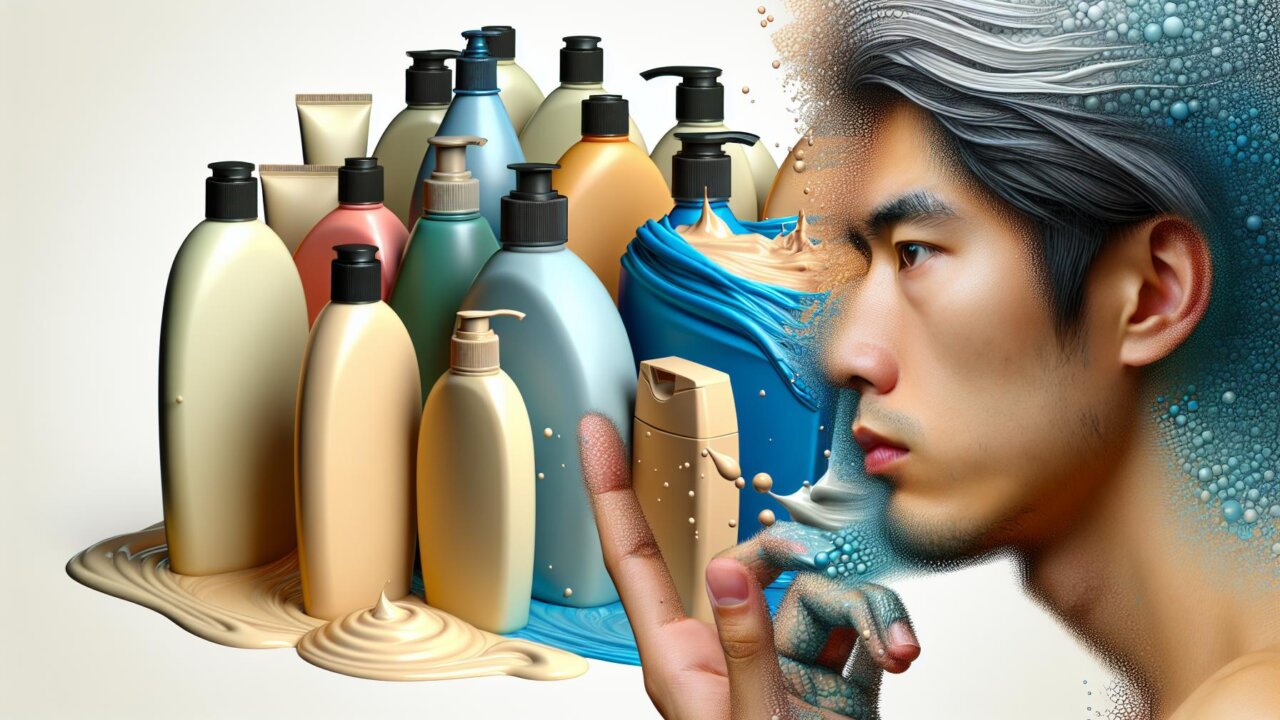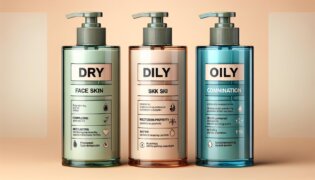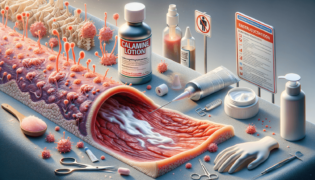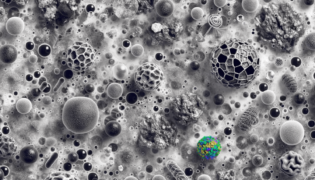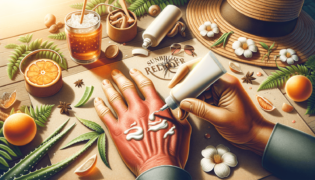Ever found an old bottle of lotion and wondered if it’s still good to use? You’re not alone. Like many other beauty and skincare products, lotions do have an expiration date.
But it’s not always as straightforward as checking a printed date on the bottle. There’s more to understanding the lifespan of your lotion. Factors like ingredients, packaging, and storage conditions can all play a part.
So, let’s dive into the details and answer the burning question — does lotion expire?
Key Takeaways
- Lotions, like many skincare products, do expire, but there are various factors like ingredients, packaging, and storage conditions that impact their shelf life.
- Natural ingredient-based lotions generally have a shorter lifespan, between 6-12 months, while lotions with synthetic preservatives can last up to 1-3 years.
- Lotion packaging matters. Pump bottles are less prone to bacterial contamination than jars or tubs, increasing overall product lifespan.
- Storage conditions significantly affect lotion life. Keeping the lotion in a cool, dry spot away from direct sunlight helps prolong its lifespan.
- Changes in smell, texture, and color, as well as skin irritation post-application, are strong indicators of an expired lotion.
- Despite the printed expiry date on lotion bottles, it’s essential to consider aforementioned factors and not rely solely on the given date.
Exploring Lotion Expiry
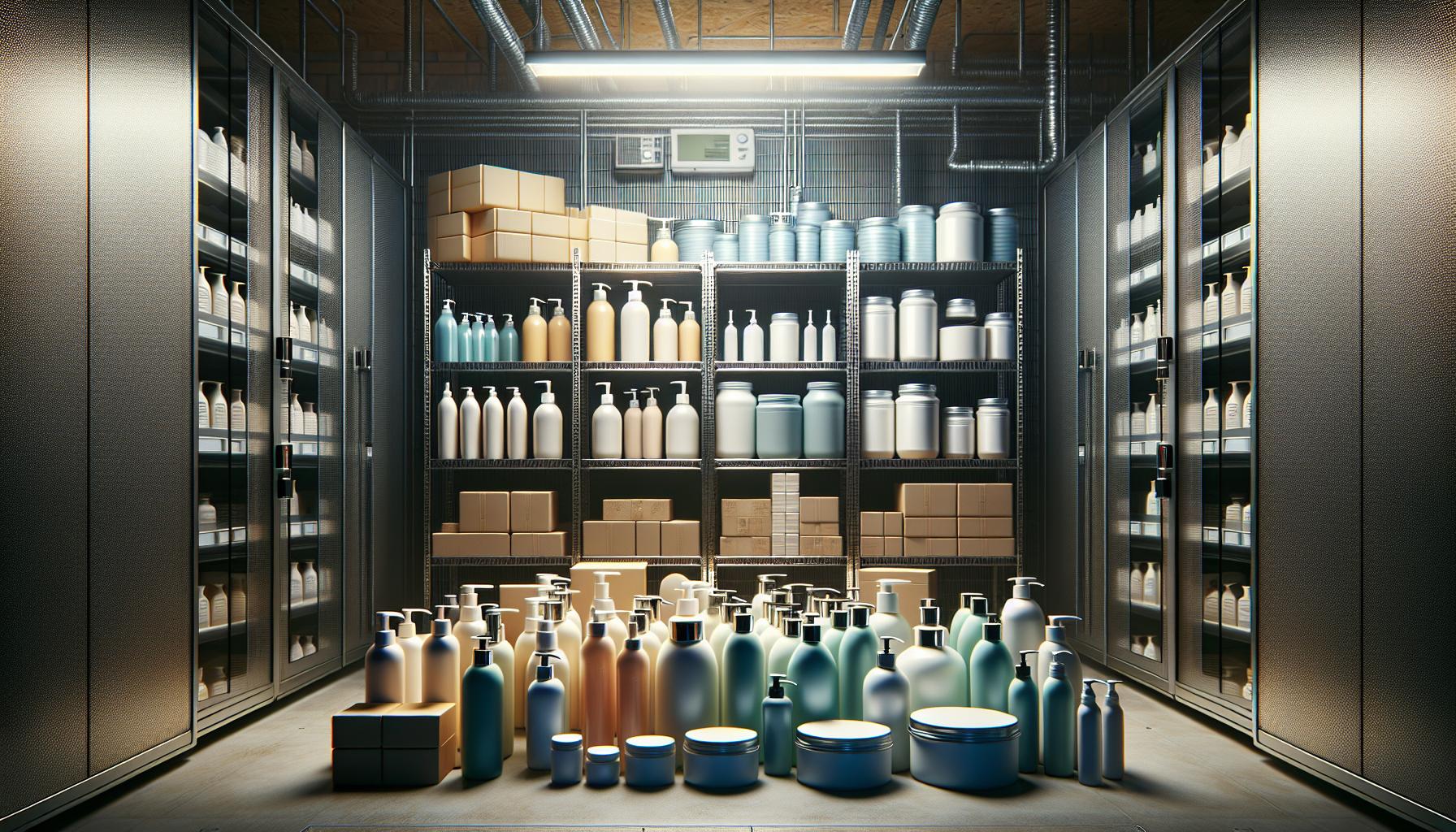
When it’s about skincare, ensuring the vitality of the products is paramount – and body lotions are no exception. Just like the salad dressing packed in your fridge, lotions also have an expiry date. But unlike food, a past-date lotion won’t develop a bad odor or a changed color. Understanding the lifespan of lotions needs a closer look at three main factors: ingredients, packaging, and storage conditions.
The ingredient composition is the prime determinant of a lotion’s shelf life. Broadly, lotions with natural ingredients have a shorter life, generally between 6-12 months. On the contrary, those with synthetic preservatives can last up to 1-3 years.
Here’s a quick snapshot of lotion lifespan based on ingredients:
| Ingredients | Estimated Lifespan |
|---|---|
| Natural | 6-12 months |
| Synthetic | 1-3 years |
Then, the packaging type also plays a part: bottles with pumps are generally less prone to bacterial contamination compared to jars. It’s because each time you dip the finger into the jar, it can introduce bacteria, reducing the overall lifespan.
The last player in the game is the storage conditions. Keeping your lotion in a cool, dry place not subjected to direct sunlight can significantly enhance its life.
So here’s the deal: while lotions do come with a printed expiry date, but its validity fundamentally relies on the ingredients, the way it’s packaged, and how it’s stored. If you’re unsure about your lotion’s condition, it’s always safer to buy a new one than risking skin problems.
Factors Affecting Lotion Expiration
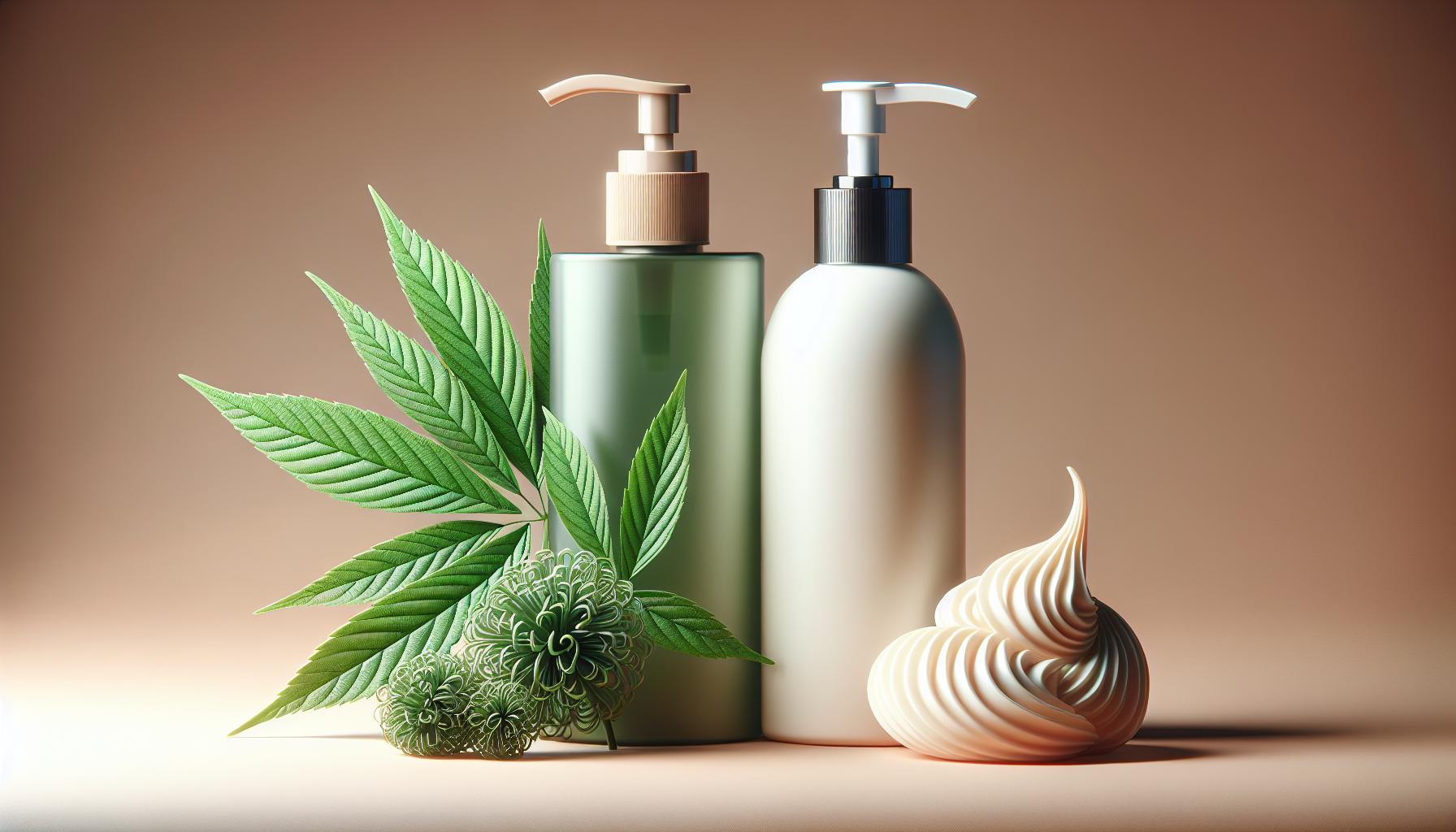
To understand lotion expiration, it’s crucial to consider several factors. Notably, the two key elements are: ingredient breakdown and packaging impact.
Ingredient Breakdown
The ingredients in your body lotion play a significant role in determining its shelf life. For example, lotions with natural ingredients, such as oils and plant extracts, typically last between 6 to 12 months. This is because these ingredients are more biodegradable and can degrade quickly especially when exposed to heat, air, and light leading to more rapid expiry.
On the other hand, lotions with synthetic preservatives like parabens and phenoxyethanol have a longer lifespan, ranging from 1 to 3 years. Synthetic preservatives are designed to prevent the growth of bacteria and mold, thereby extending the shelf life of a product.
Packaging Impact
Packaging is another significant factor that affects the life of your body lotion. Lotions housed in bottles with pumps often last longer because minimal air can get inside, which slows the degradation process. Conversely, lotions in jars or tubs may have a shorter lifespan. This is due to frequent exposure to air and potential contamination from fingers dipping into the product.
Moreover, lotions stored in a cool, dry place away from direct sunlight will last longer. If a lotion is exposed to heat or direct sunlight, the ingredients can degrade more quickly.
Ultimately, these factors significantly influence the lifespan of one’s body lotion. Although most lotions come with an expiry date printed on the packaging, this date is often more of a guideline than a rigid rule. As a result, it’s important to monitor changes in your lotion such as texture, color, or smell, which could be signs of degradation. It’s always best to err on the side of caution, replacing any lotion where there’s doubt about its condition to avoid any potential skin issues.
How to Tell if Your Lotion Has Expired
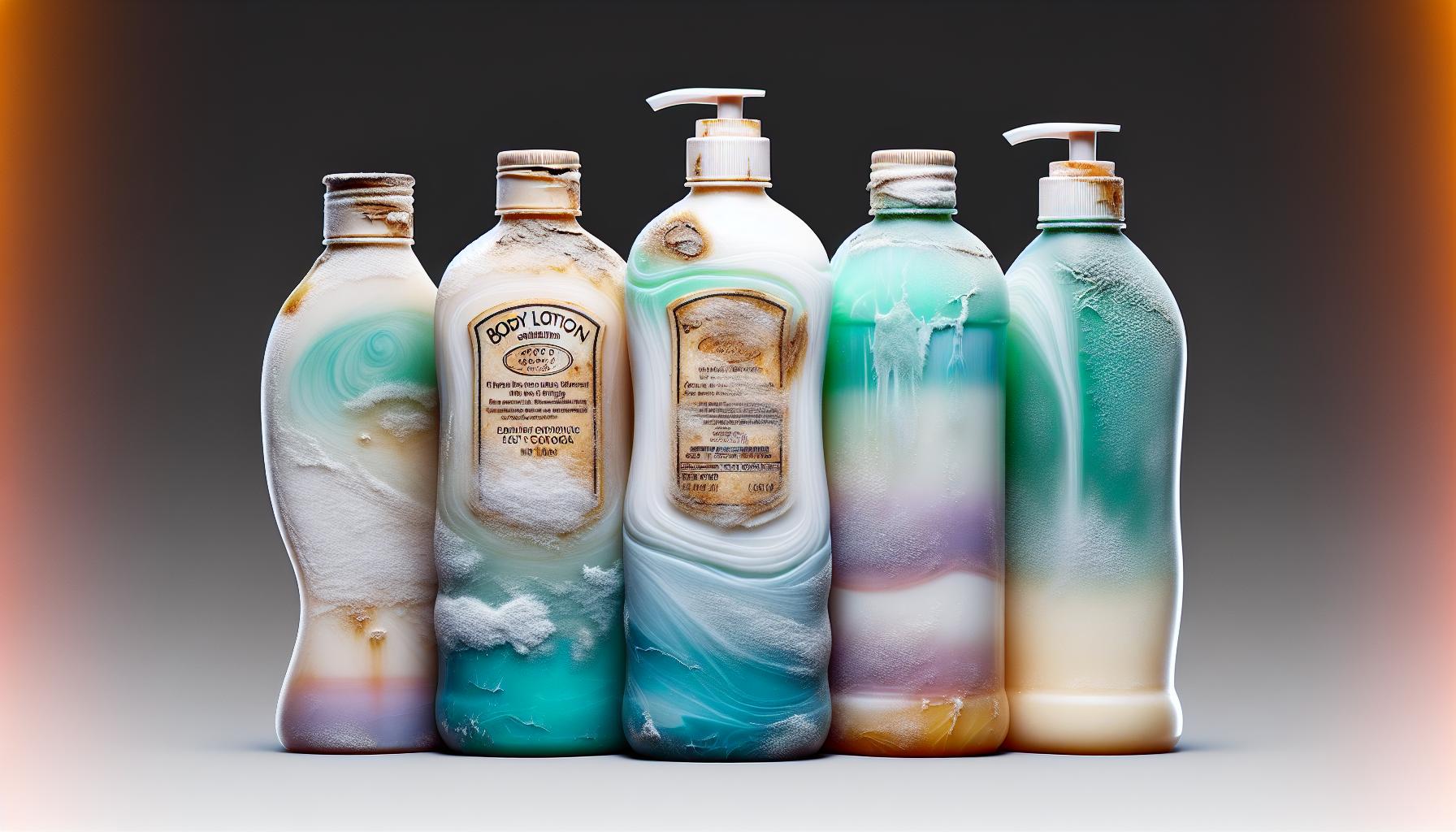
It’s not always obvious when a lotion has passed its prime. However, there are a few telltale signs that should prompt you to take a closer look.
Changes in Smell
The change in fragrance can often be the first indicator that your body lotion may be past its expiration date. Over time as the ingredients in the lotion breakdown, the smell can turn rancid or simply fade away. Trust your nose; if the lotion smells off or different, it’s likely expired.
Altered Texture and Color
A shift in color or texture is another clear sign. For example, if your lotion was once creamy and smooth and is now clumpy, runny, or has separated, it’s time for a replacement. Similarly, any alteration in color, such as darkening, lightening, or discoloration, is a potent sign of an expired lotion.
Skin Irritation
Lastly, though slightly less common, any type of skin irritation after usage could indicate that the lotion is expired. If you notice redness, rash, or any itchy sensation when applying the lotion, it’s likely the product has degraded.
Remember, it’s the composition of the ingredients and the packaging’s design that influences their shelf life. Body lotions with natural ingredients tend to break down faster, compared to those with synthetic preservatives.
Conclusion
It’s clear that lotion does indeed expire. Changes in smell, texture, and color are telltale signs. And don’t forget, skin irritation can be a big red flag. It’s also worth noting that lotions with natural ingredients may not last as long as those with synthetic preservatives. So, it’s crucial to consider both the ingredient composition and packaging when judging a product’s lifespan. Keep these points in mind, and you’ll be sure to maximize the benefits of your lotions while avoiding any potential skin issues. After all, skincare should enhance your well-being, not compromise it.
